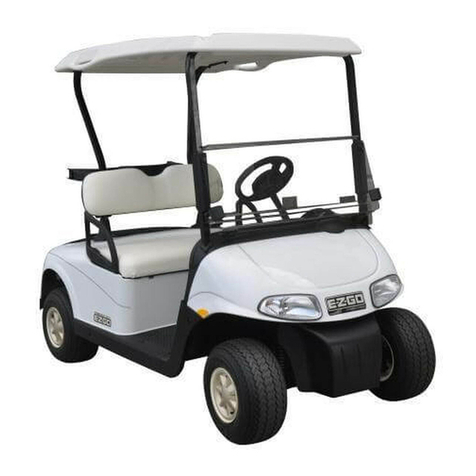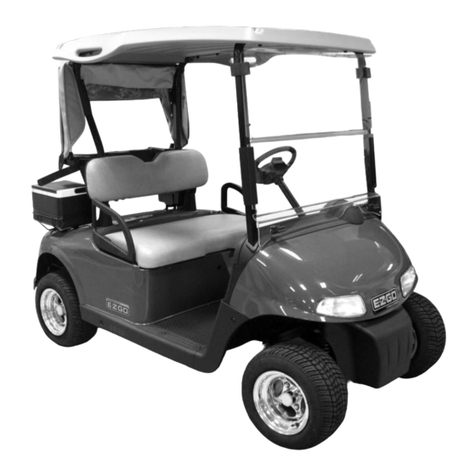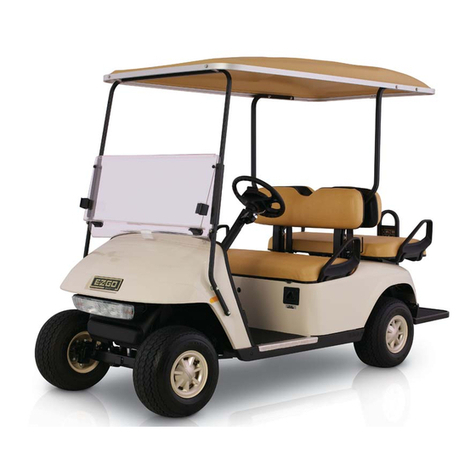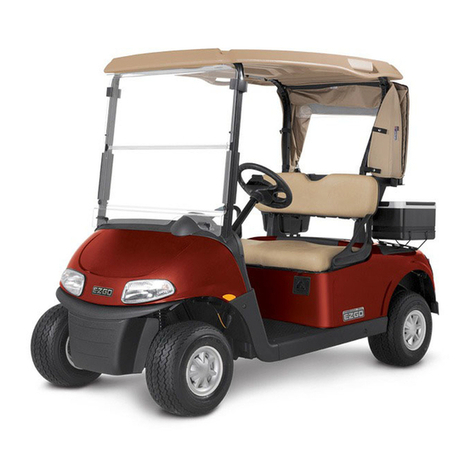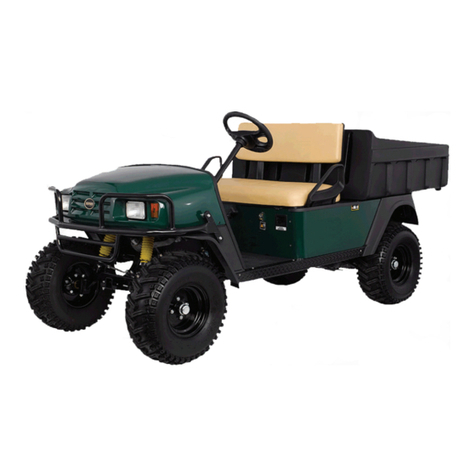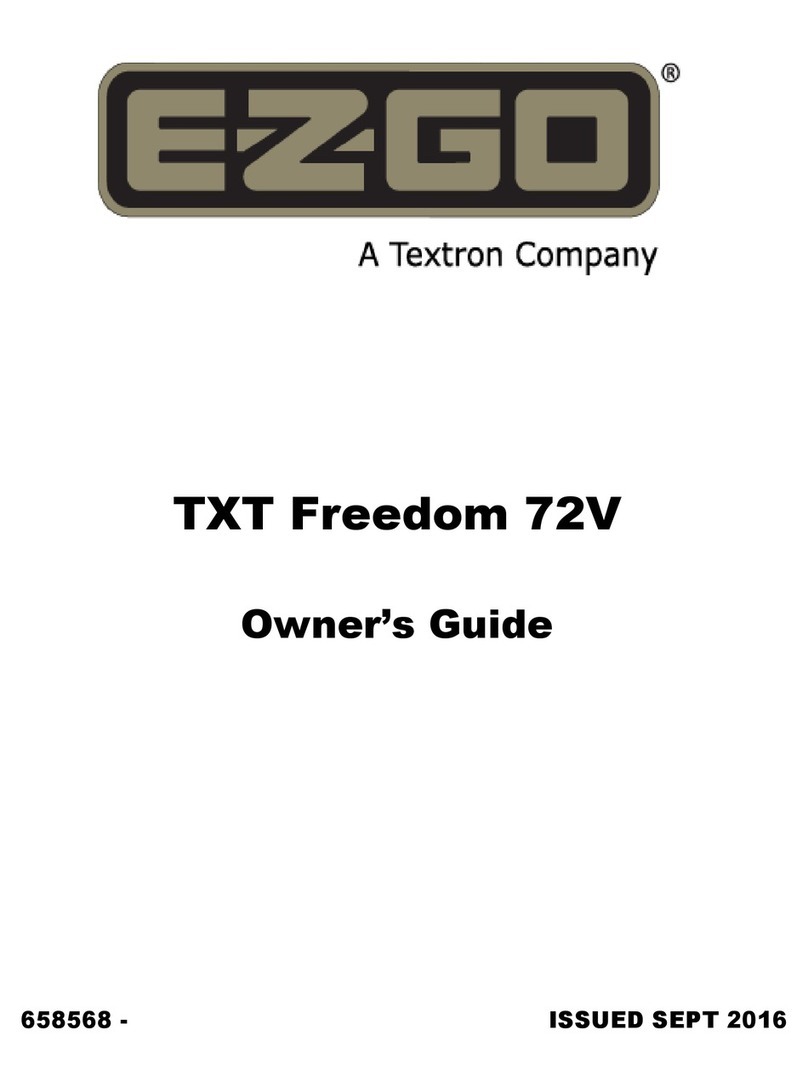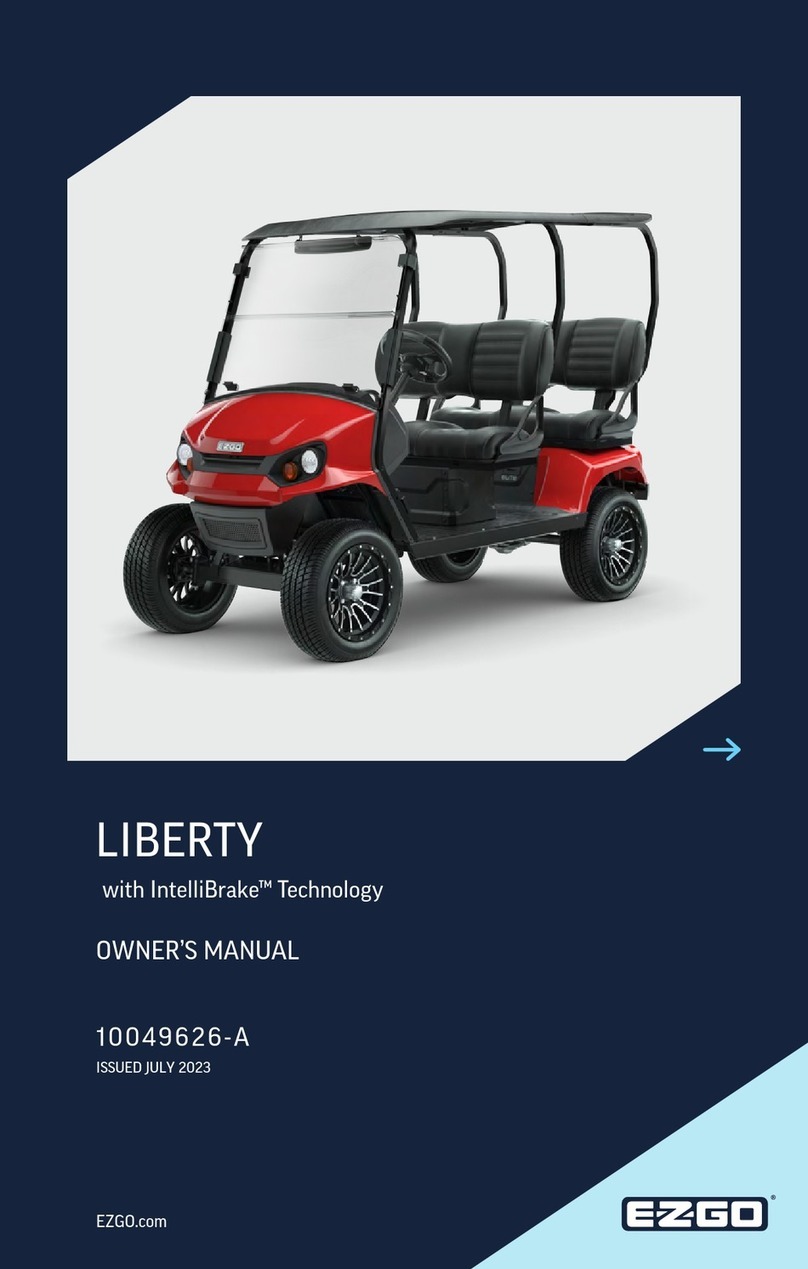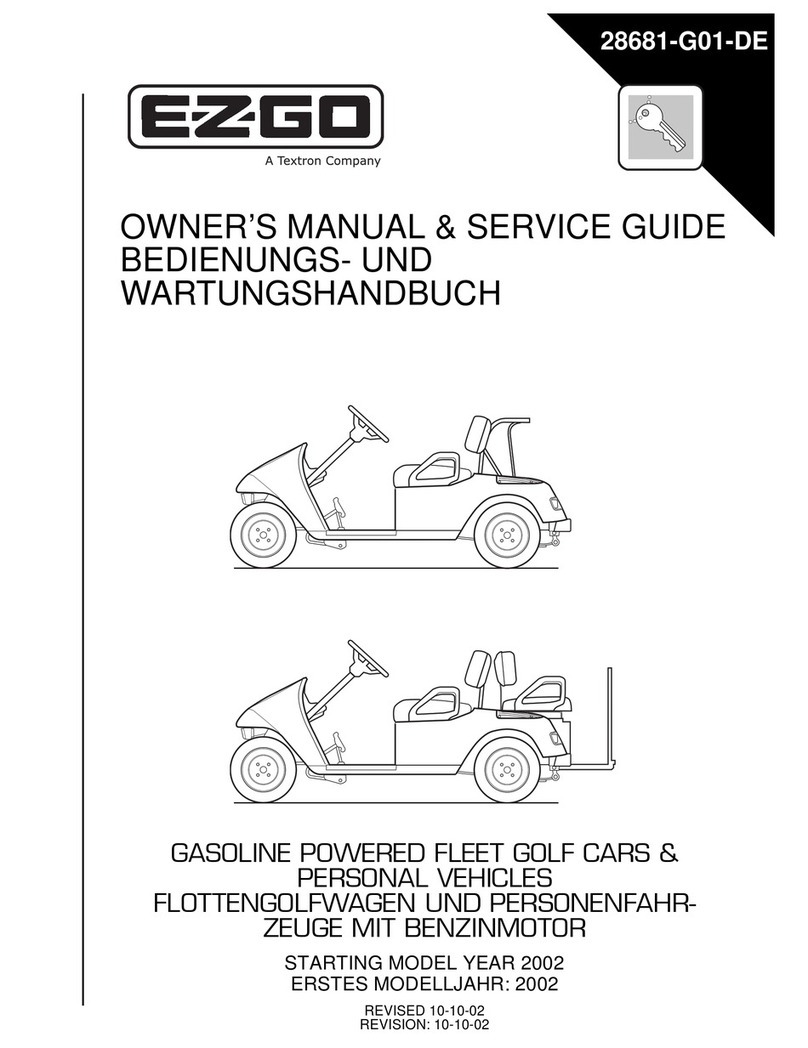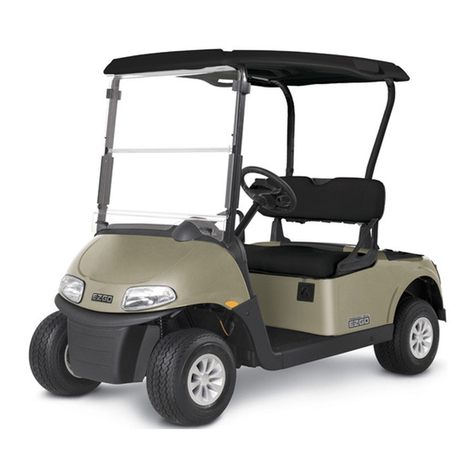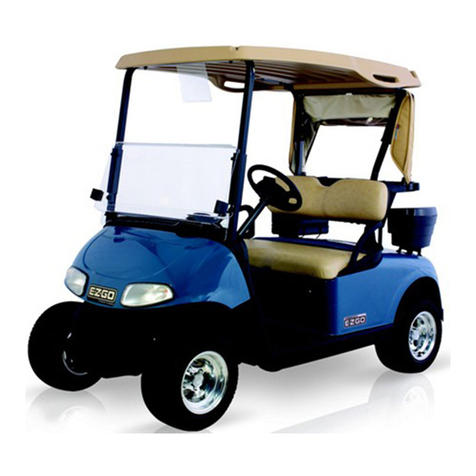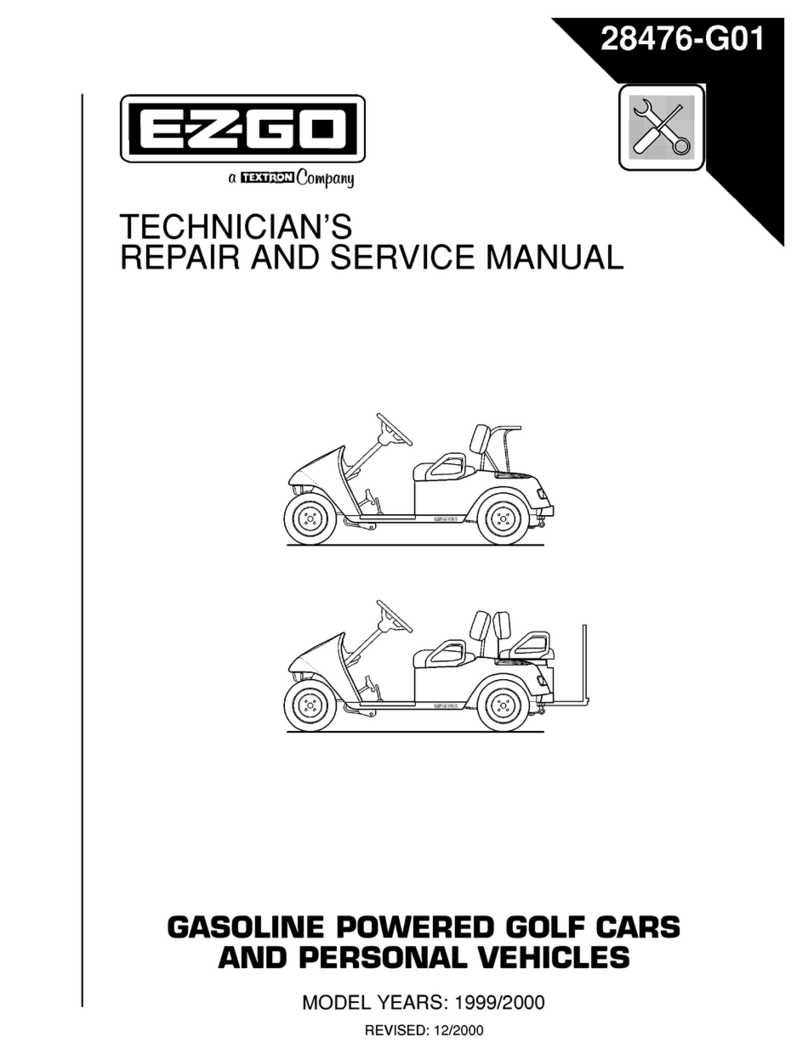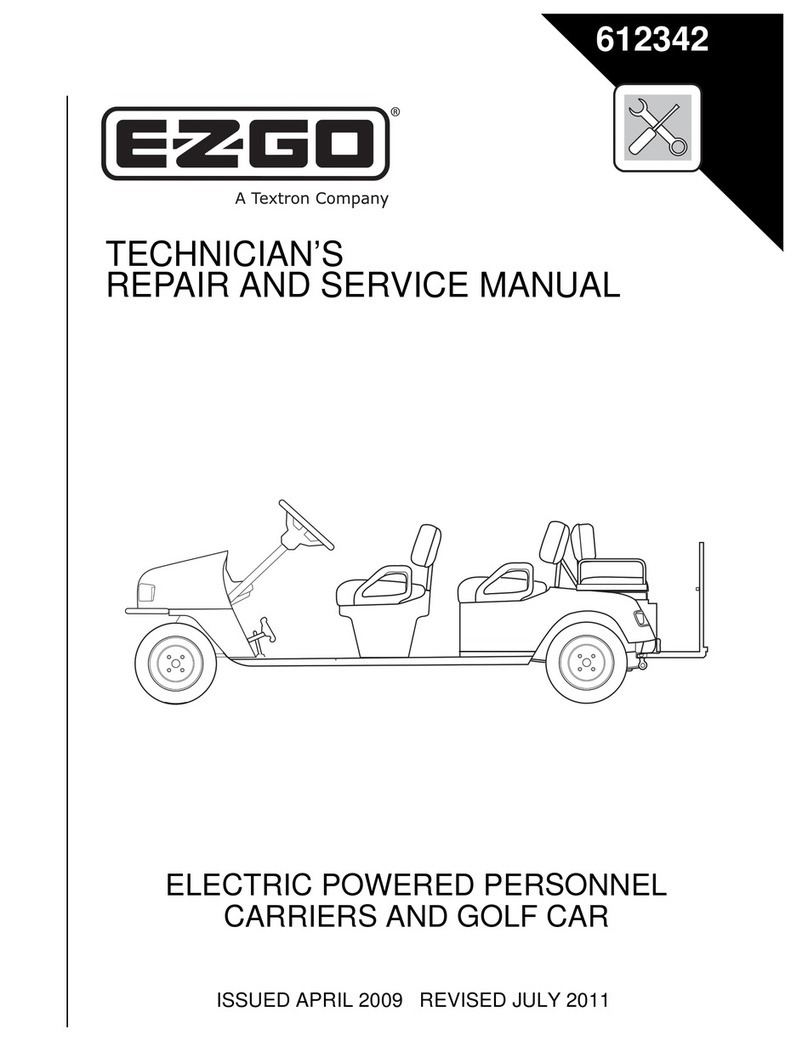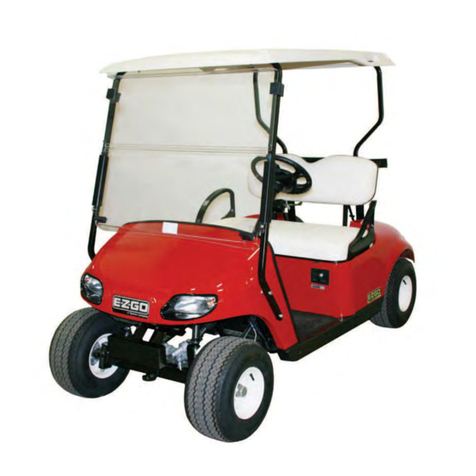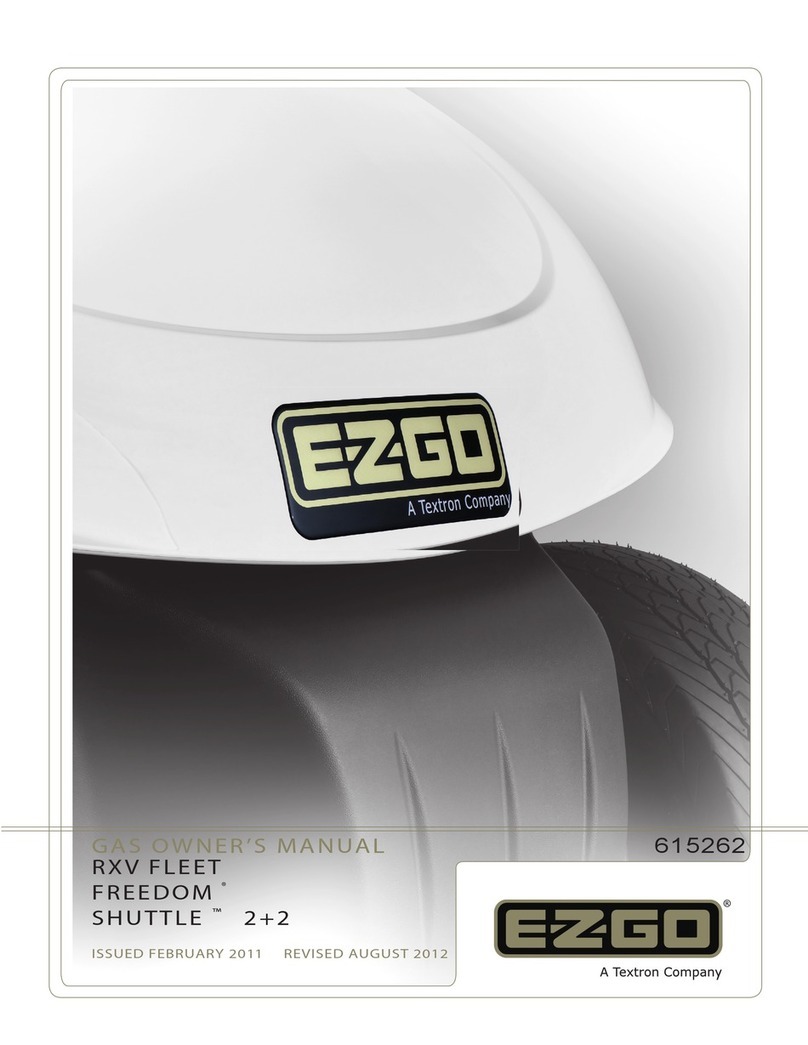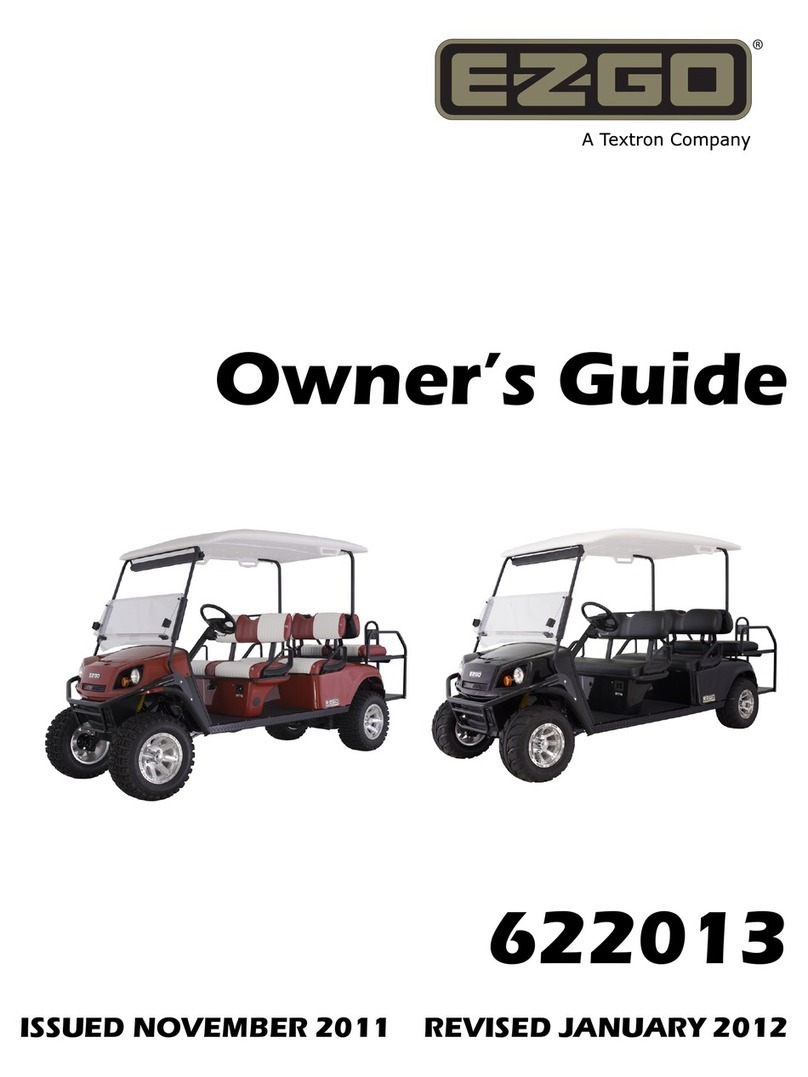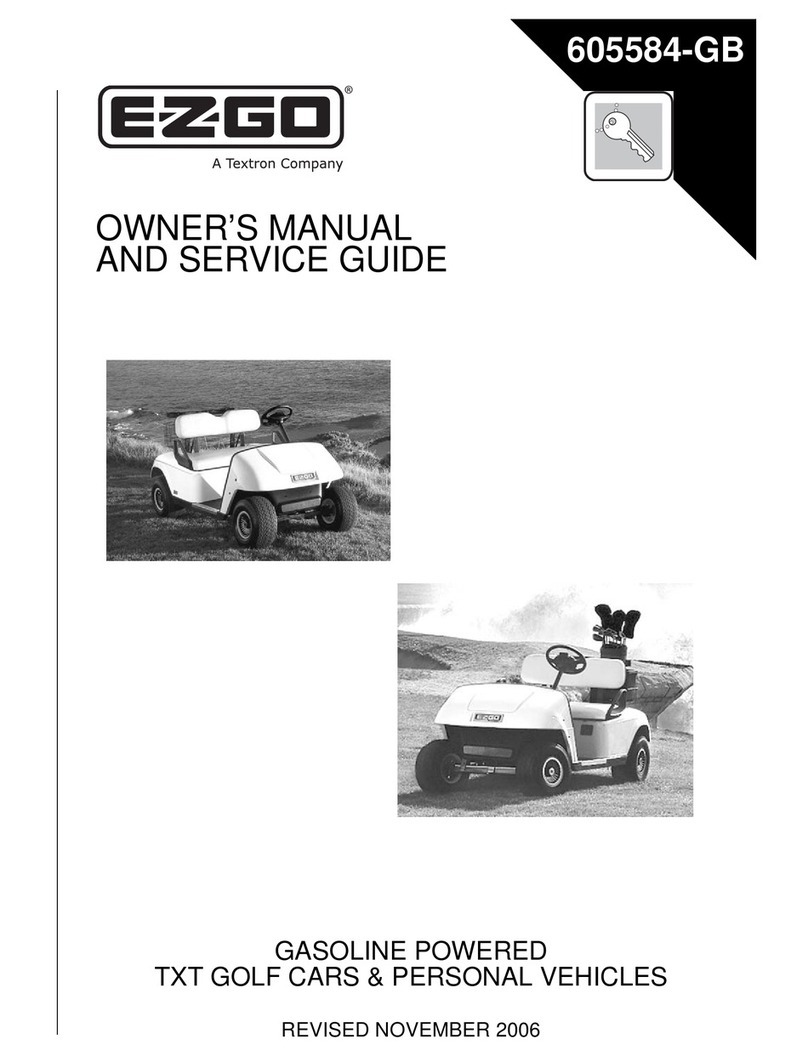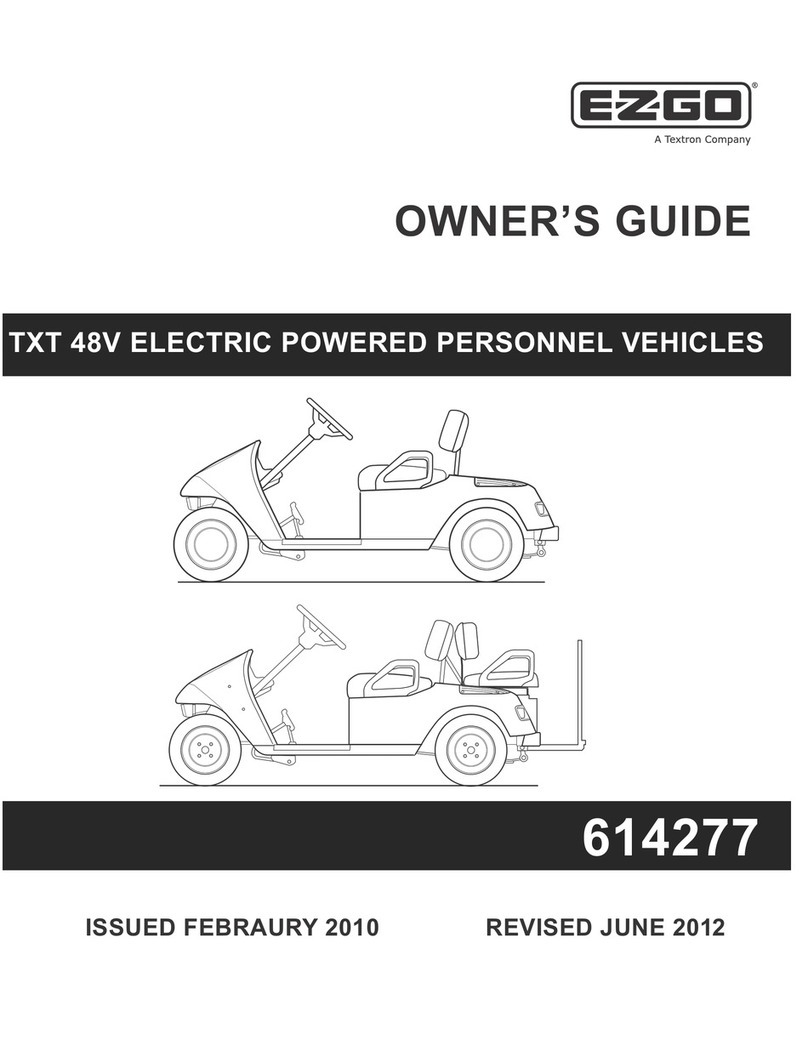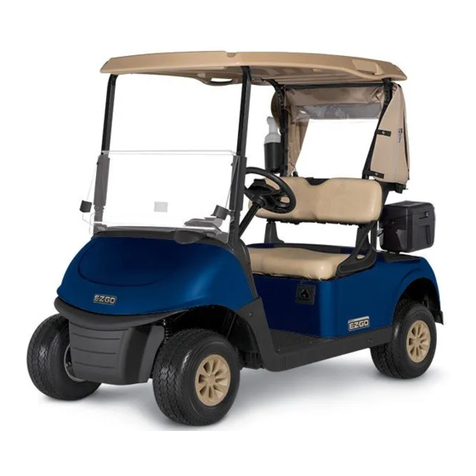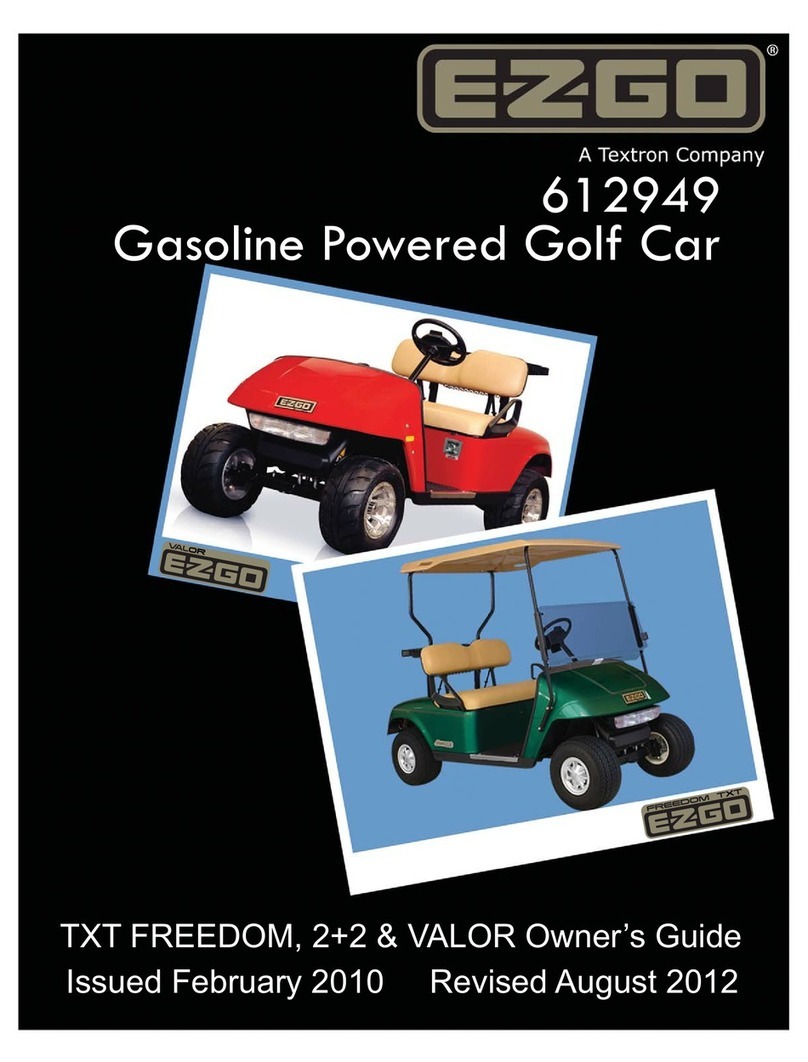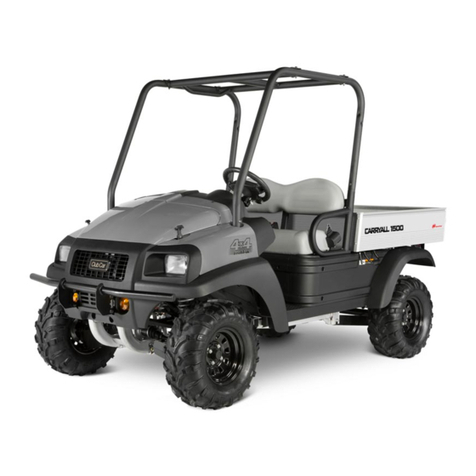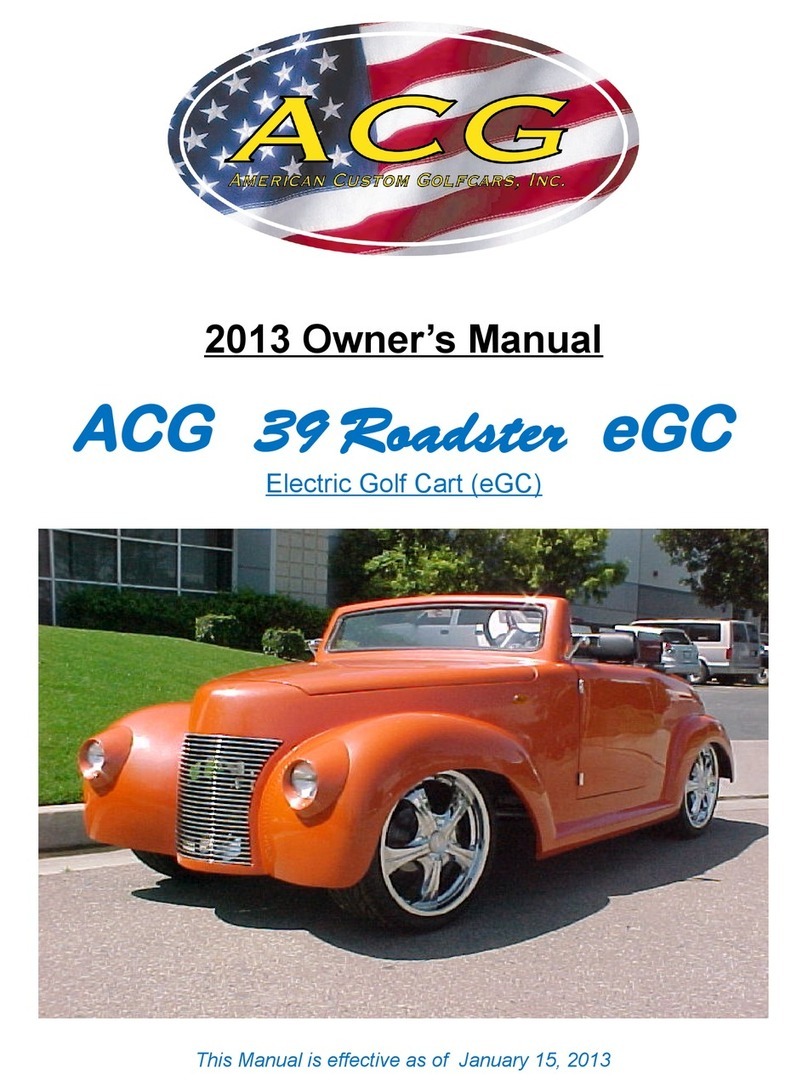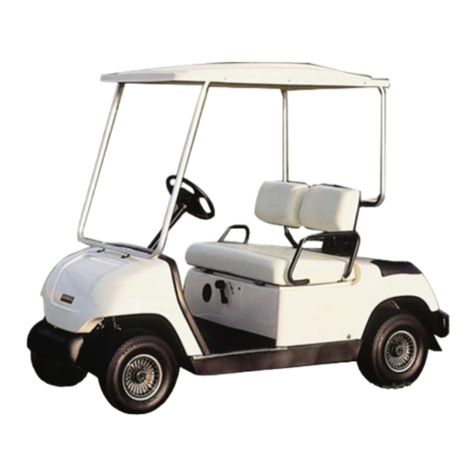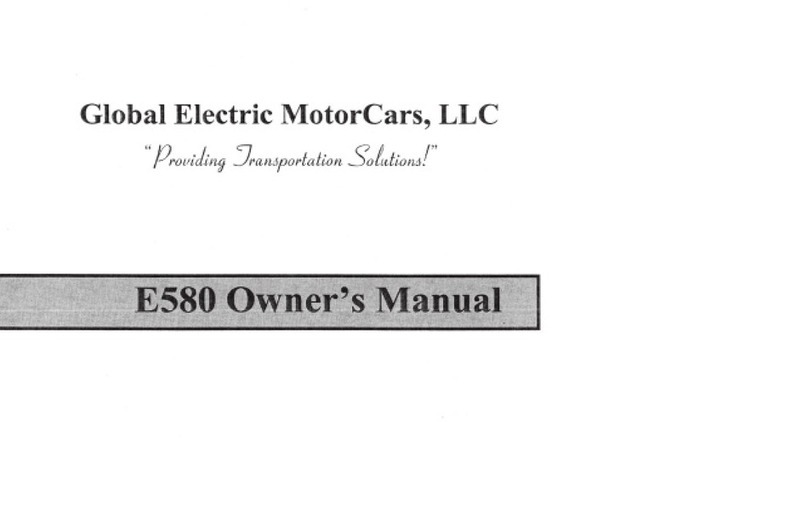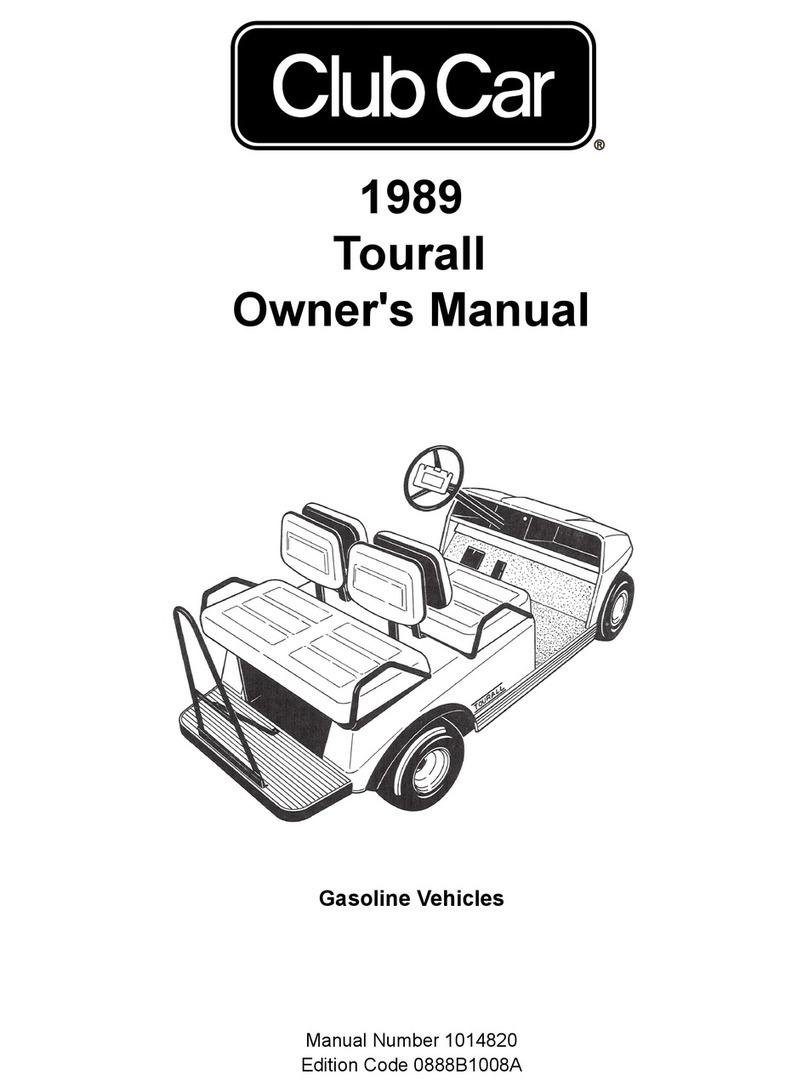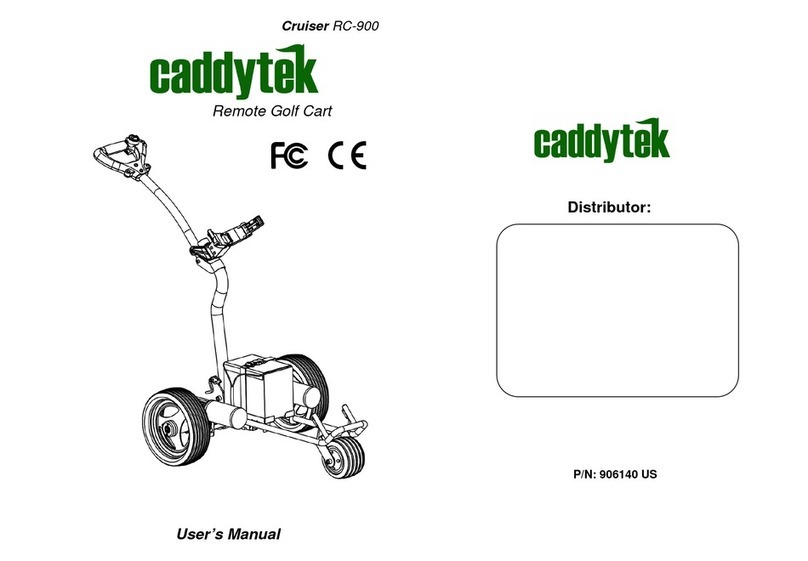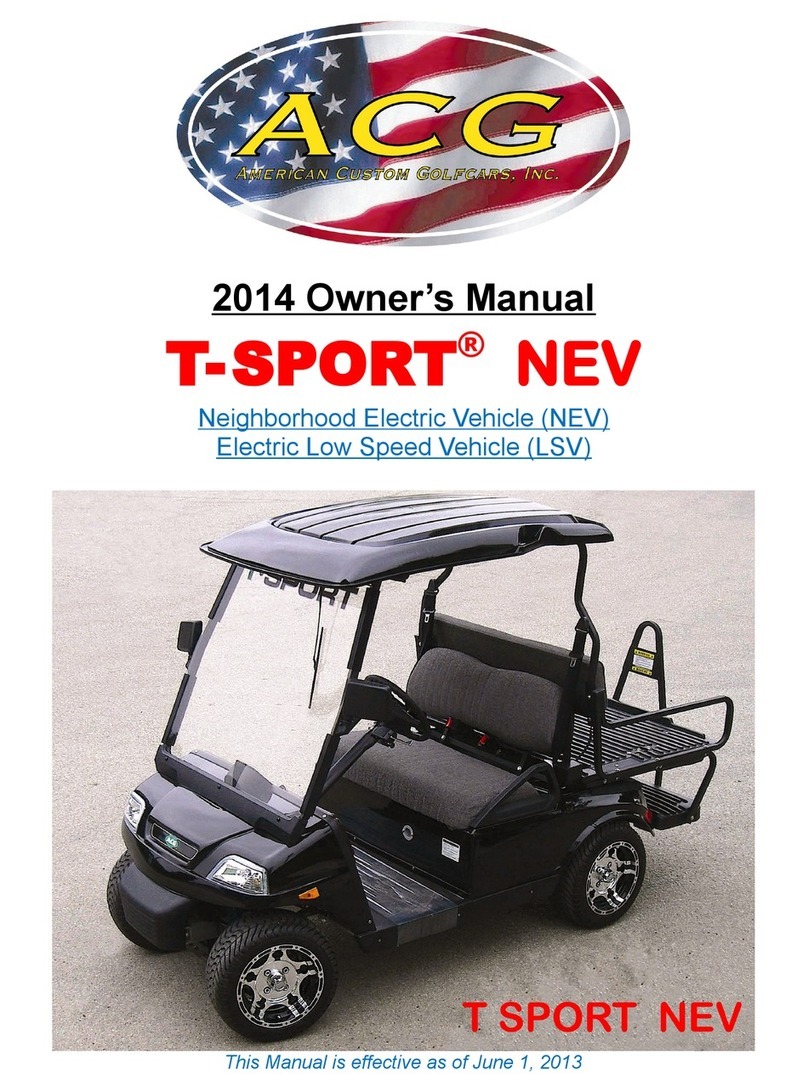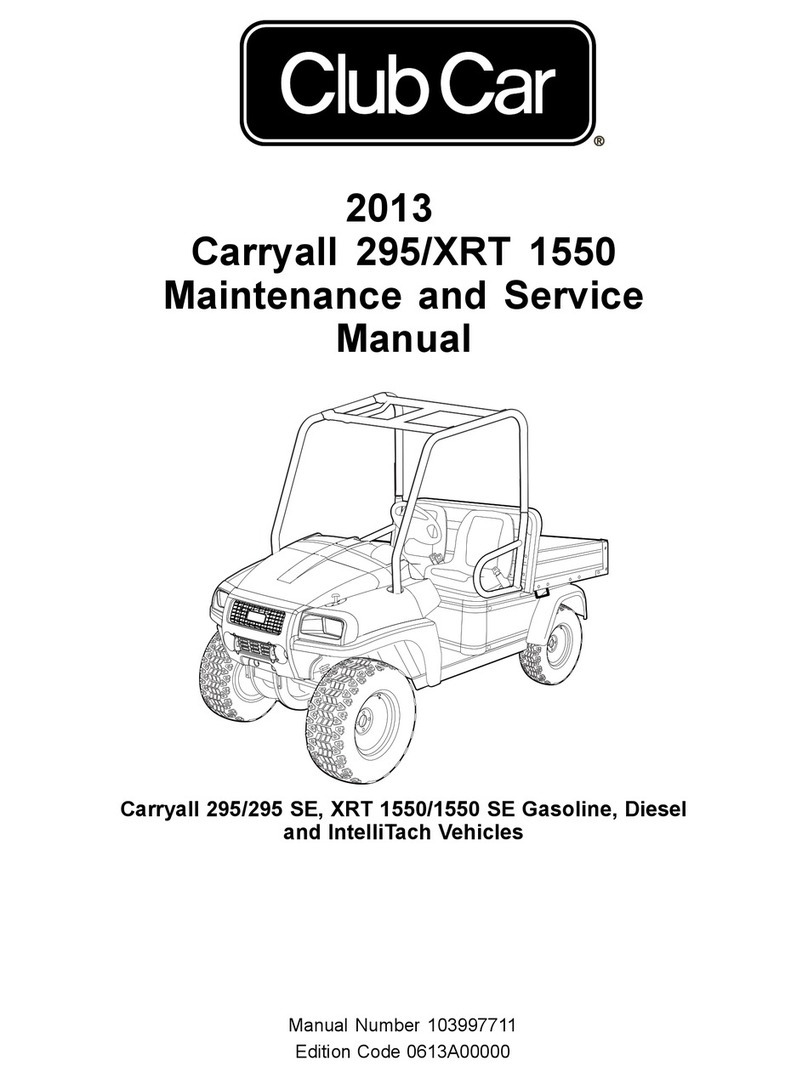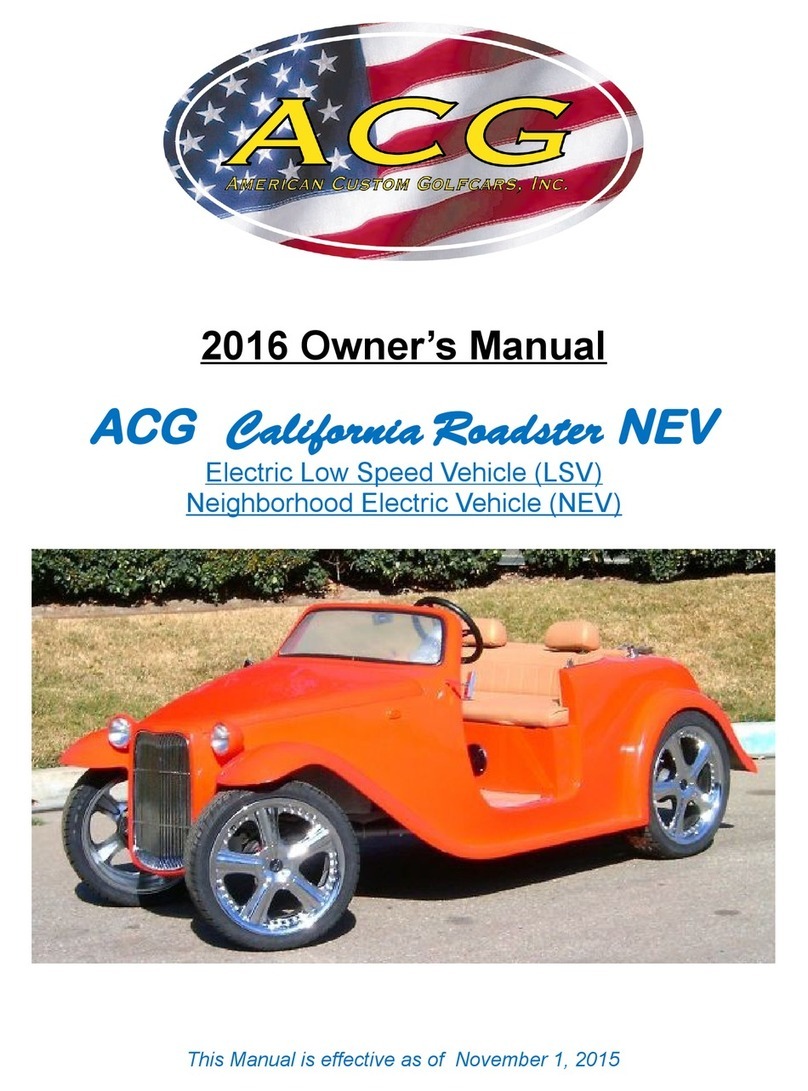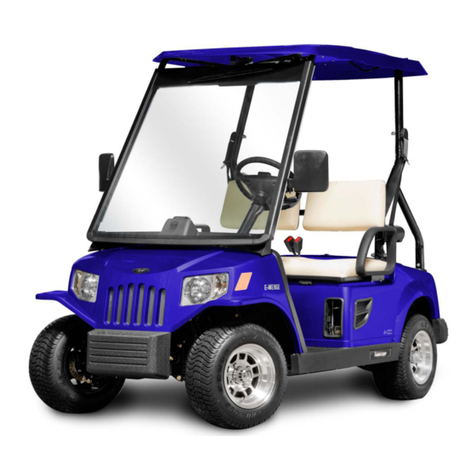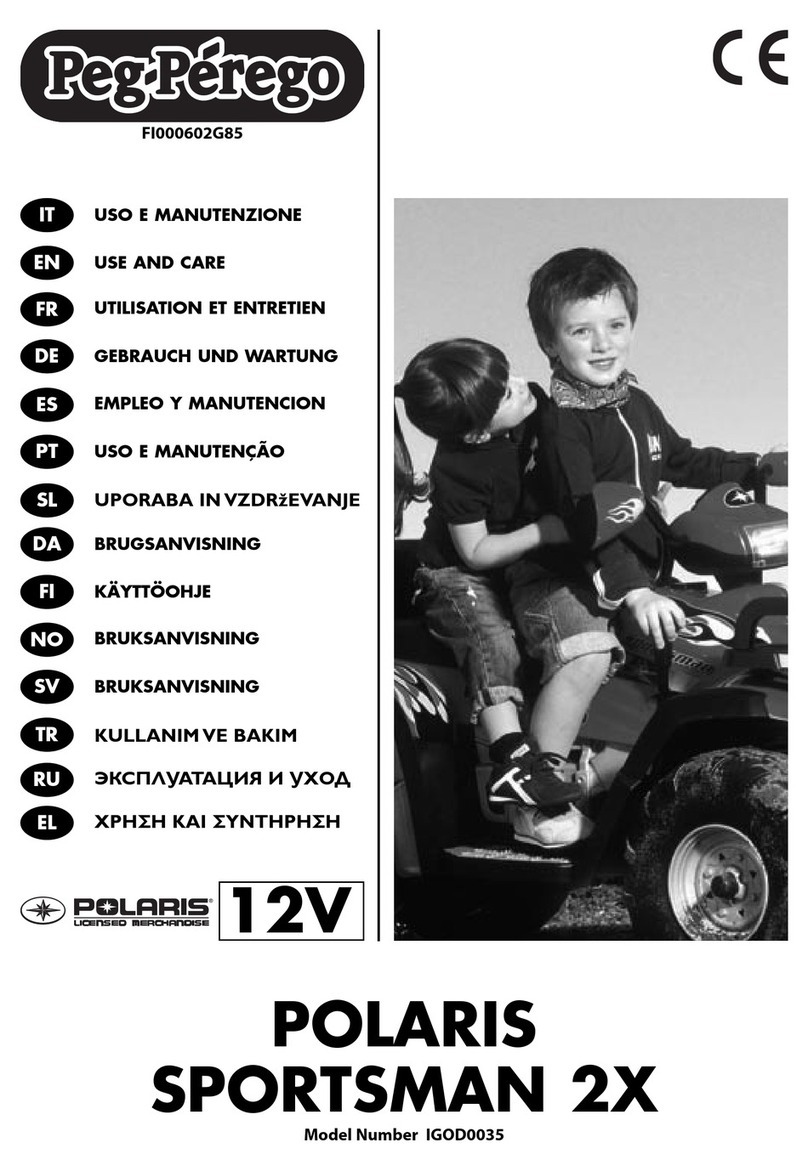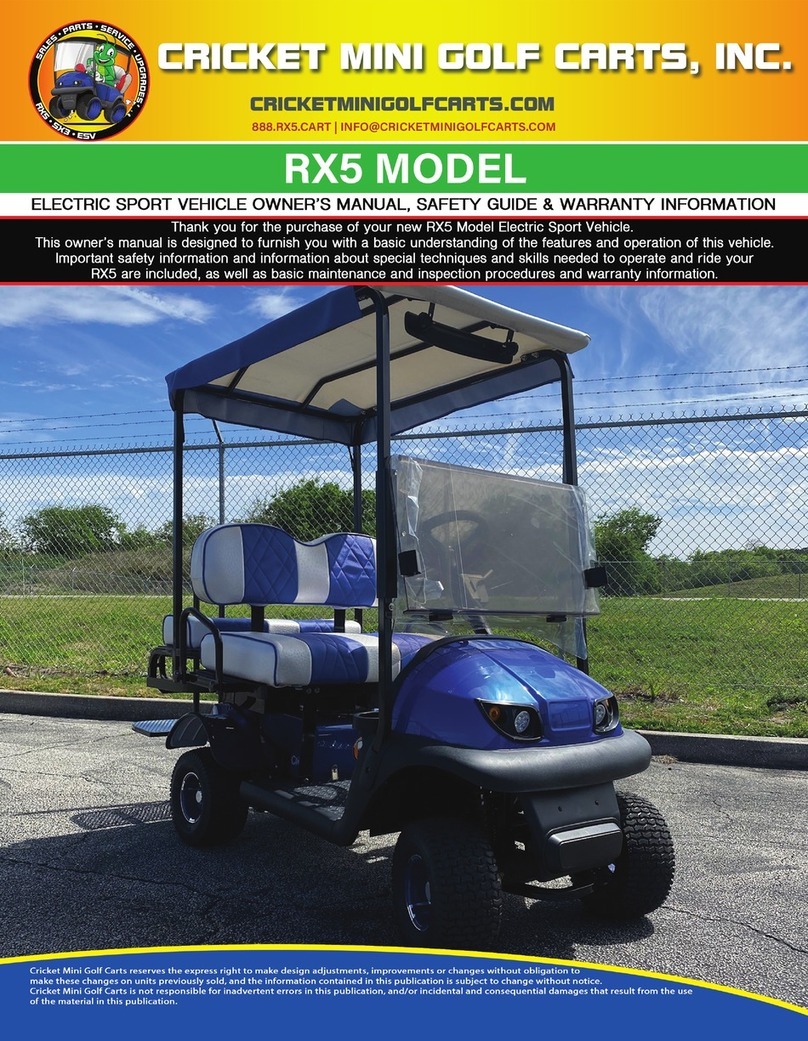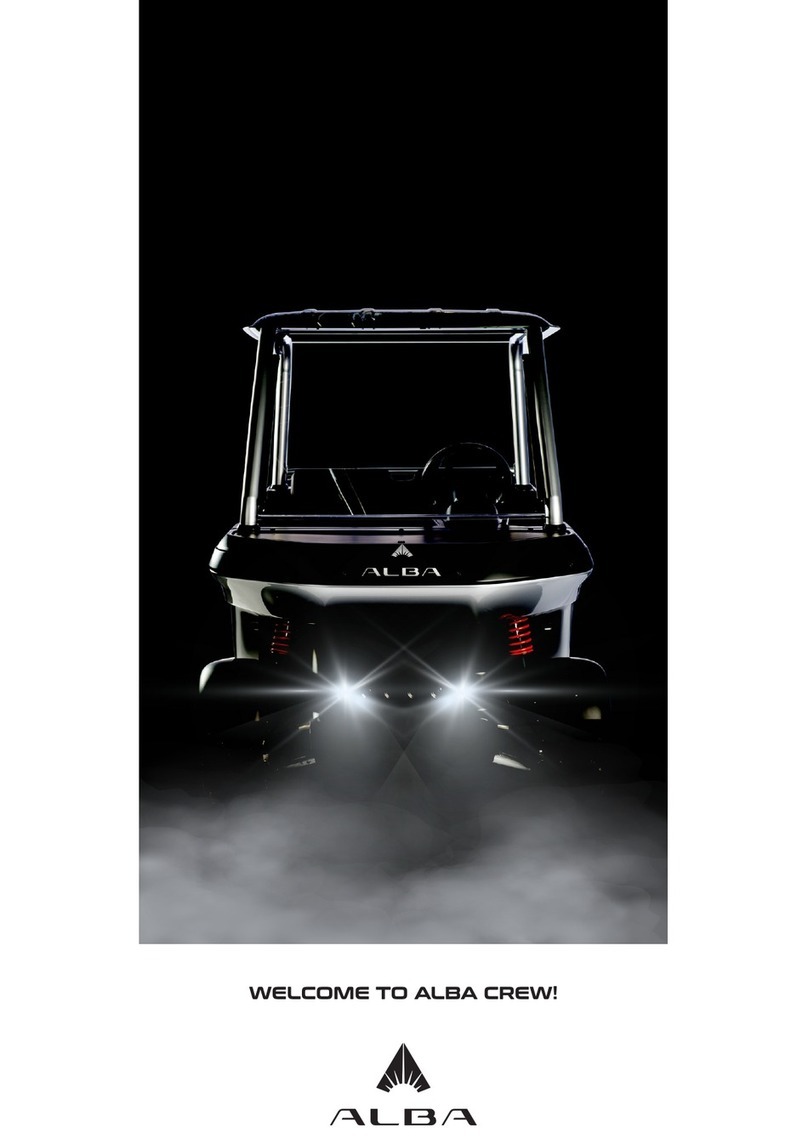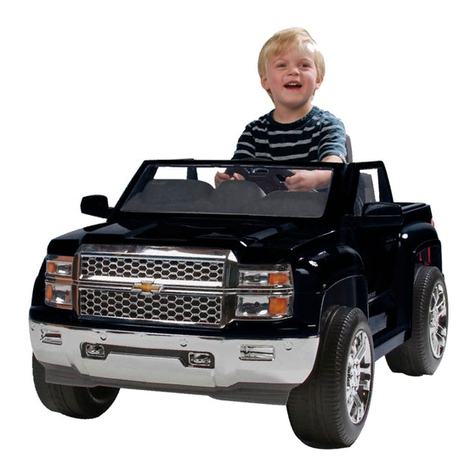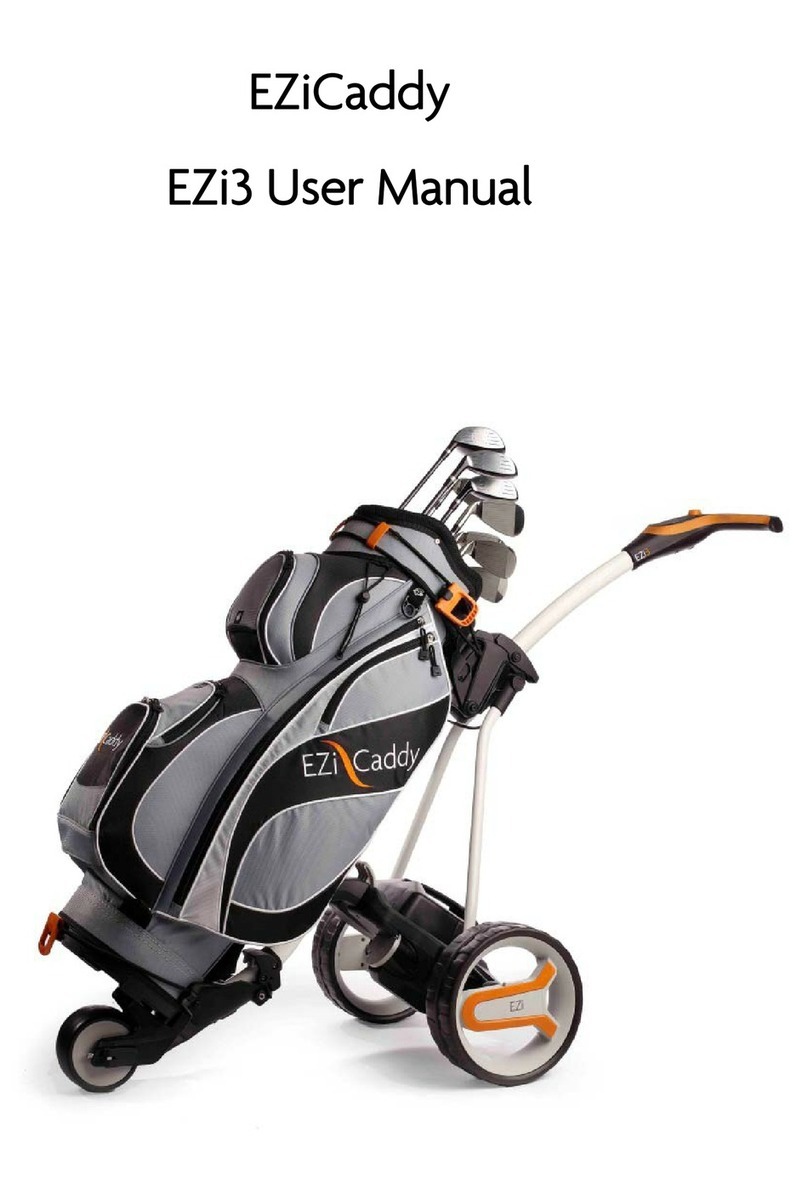
SAFETY
(NOTES, CAUTIONS AND WARNINGS CONTINUED ON INSIDE OF BACK COVER)
NOTES, CAUTIONS AND WARNINGS
Throughout this guide NOTE, CAUTION and WARNING
will be used. ANOTE indicates a condition that should be
observed.
A CAUTION indicates a condition that
may result in damage to the vehicle.
A WARNING indicates a
hazardous condition that
could result in severe
injury or death.
Please observe these NOTES, CAUTIONS and WARN-
INGS; be aware that servicing a vehicle requires
mechanical skill and a regard for conditions that could be
hazardous. Improper service or repair may damage the
vehicle or render it unsafe.
Engine exhaust from this
product contains chemi-
cals known, in certain
quantities, to cause cancer, birth defects, or other re-
productive harm.
The exhaust emissions of this vehicles’ engine
is regulated by the Federal EPA. Significant
fines could result from modifications or tampering with the
engine, fuel, ignition or air intake systems.
Battery posts, terminals
and related accessories
contain lead and lead
compounds. Wash hands after handling.
This spark ignition system meets all require-
ments of the Canadian Interference-Causing
Equipment Regulations.
! !
! !
! !
Ce système d'allumage par étincelle de véhicule respecte
toutes les exigences du Règlement sur le matériel brouilleu
du Canada.
Read and understand all labels located on the vehicle. For any questions on any of the information, contact a represen-
tative for clarification.
Always replace any damaged or missing labels.
On steep hills it is possible for vehicles to coast at greater than normal speeds encountered on a flat surface. To pre-
vent loss of vehicle control and possible serious injury, speeds should be limited to no more than the maximum speed
on level ground. (See vehicle specification.) Limit speed by applying the service brake.
Catastrophic damage to the drive train components due to excessive speed may result from driving the vehicle above
specified speed. Damage caused by excessive speed may cause a loss of vehicle control, is costly, is considered
abuse and will not be covered under warranty.
If the vehicle is to be used in a commercial environment, signs similar to the ones illustrated should be used to warn of
situations that could result in an unsafe condition.
Be sure that this manual remains as part of the permanent service record should the vehicle be re-sold.
WASH HANDS
AFTER HANDLING!
Battery posts,
terminals and related
accessories contain
lead and lead compounds,
chemicals known
to cause cancer and
reproductive harm.
BATTERY WARNING
WASH HANDS
AFTER HANDLING!
WARNING: Battery posts, terminals and related
accessories contain lead and lead compounds,
chemicals known to cause cancer and reproductive harm.
BATTERIES
CONTAIN LEAD
AND RELATED PARTS
